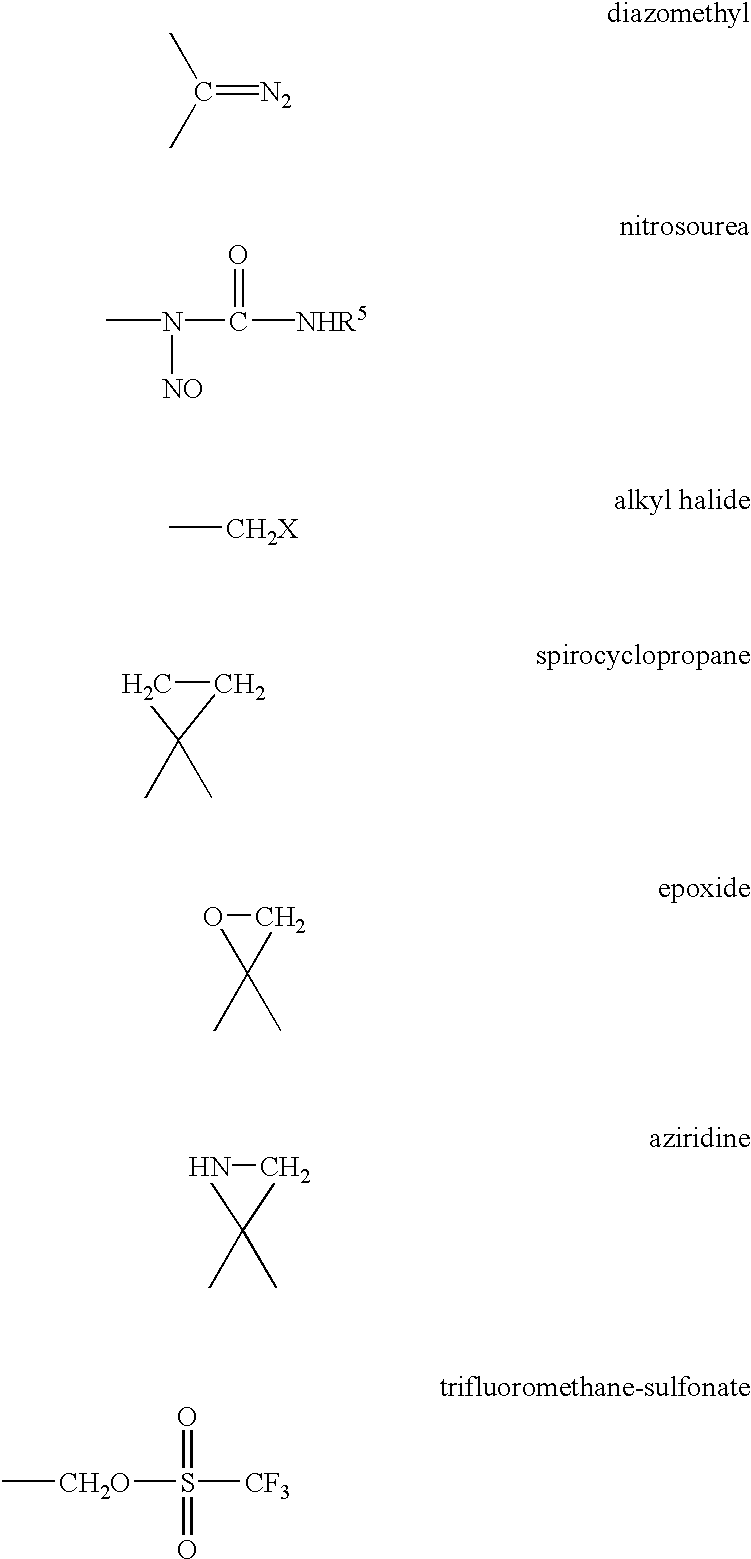Method for labeling and fragmenting DNA
- Summary
- Abstract
- Description
- Claims
- Application Information
AI Technical Summary
Benefits of technology
Problems solved by technology
Method used
Image
Examples
example 1.1
Synthesis of meta-BioPMDAM:
[0221] Compound Biotin meta-acetophenone 1a:
[0222] The D-biotin (1.0 gram (g), 4.1 millimoles (mmol) is solubilized in 45 milliliters (ml) of anhydrous DMF in the hot state. The mixture is cooled to 0.degree. C. under argon, and then N-methylmorpholine (590 microliters (.mu.l), 5.33 mmol) and isobutyl chloroformate (840 .mu.l, 6.60 mmol) are successively added. The mixture is kept stirred for 30 minutes (min), and then 3-aminoacetophenone (824 mg, 6.10 mmol) and N-methylmorpholine (480 .mu.l, 4.35 mmol) in 10 ml of DMF are added. The solution is maintained stirred at 0.degree. C. for 2 hours (h), and then evaporated to dryness. The residue is taken up in 3 ml of MeOH, and then 50 ml of water are added. The precipitate obtained is filtered, washed with water, CH.sub.2Cl.sub.2 and ether to give 1.2 g (80%) of crude product 1a. Recrystallization from the MeOH--H.sub.2O pair gives 1a (1.01 g, 70%) in the form of a white powder.
[0223] m.p. 145.degree. C.--IR (K...
example 1.2
Synthesis of para-BioPMDAM
[0230] Compound Biotin para-acetophenone 1b:
[0231] The D-biotin (1 g, 4.1 mmol) is solubilized in 45 ml of anhydrous DMF in the hot state. The mixture is cooled to 0.degree. C. under argon, and then N-methylmorpholine (590 .mu.l, 5.33 mmol) and isobutyl chloroformate (840 .mu.l, 6.60 mmol) are successively added. The mixture is kept stirred for 30 min, and then 4-aminoacetophenone (824 mg, 6.10 mmol) is added. The solution is maintained stirred at 0.degree. C. for 2 h, and then evaporated to dryness. The residue is taken up in 50 ml of water. The precipitate obtained is filtered, washed with water and then with 50 ml of MeOH in the hot state. The white precipitate is dissolved in DMF while heating and then the solution obtained is filtered and washed to with MnOH. The filtrate is recovered and evaporated to dryness to give 888 mg of 1b (2.46 mmol, 60%).
[0232] m.p. 260.degree. C.--IR (KBr): 3260, 2930, 2358, 1706, 1673, 1610, 1526, 1401, 1380, 1322, 1257, 11...
example 1.3
Synthesis of ortho-BioPMDAM
[0239] Compound Biotin ortho-acetophenone 1c:
[0240] The D-biotin (1 g, 4.1 mmol) is solubilized in 45 ml of anhydrous DMF in the hot state. The mixture is cooled to 0.degree. C. under argon, and then N-methylmorpholine (590 .mu.l, 5.33 mmol) and isobutyl chloroformate (840 .mu.l, 6.60 mmol) are successively added. The mixture is kept stirred for 30 min, and then 2-aminoacetophenone (824 mg, 6.10 mmol) is added. The solution is maintained stirred at room temperature for 3 h 30 min, and then evaporated to dryness. The residue is taken up in 50 ml of water. The precipitate obtained is filtered, washed with water and then with 50 ml of MeOH in the hot state. The precipitate obtained is filtered and washed with water. Recrystallization is carried out by dissolving the product in MeOH in the hot state and reprecipitating by addition of water. The precipitate is filtered, washed with water, and then with ether to give 1.1 g (2.95 mmol, 72%) of crude product 1c.
[0...
PUM
| Property | Measurement | Unit |
|---|---|---|
| Length | aaaaa | aaaaa |
| Length | aaaaa | aaaaa |
| Length | aaaaa | aaaaa |
Abstract
Description
Claims
Application Information
 Login to View More
Login to View More - R&D
- Intellectual Property
- Life Sciences
- Materials
- Tech Scout
- Unparalleled Data Quality
- Higher Quality Content
- 60% Fewer Hallucinations
Browse by: Latest US Patents, China's latest patents, Technical Efficacy Thesaurus, Application Domain, Technology Topic, Popular Technical Reports.
© 2025 PatSnap. All rights reserved.Legal|Privacy policy|Modern Slavery Act Transparency Statement|Sitemap|About US| Contact US: help@patsnap.com



